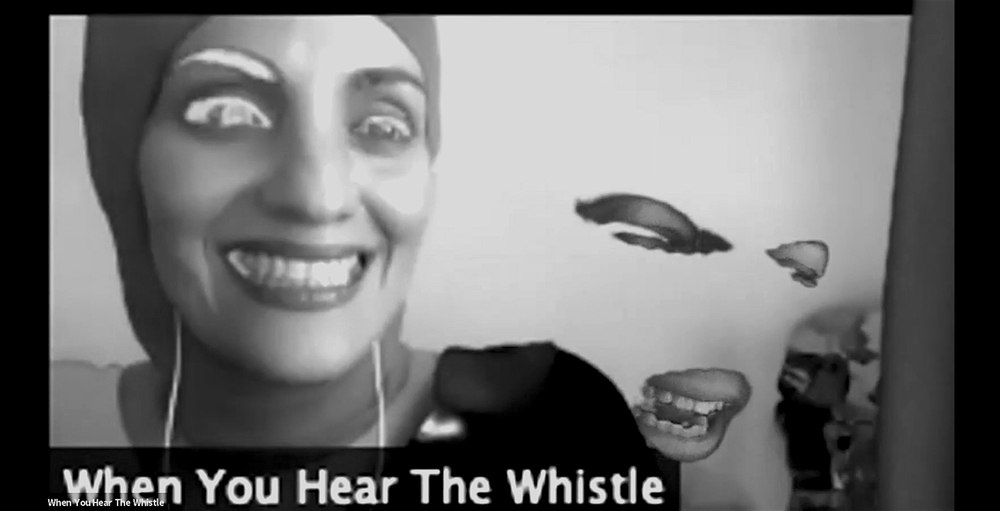
WHEN YOU HEAR THE WHISTLE: AN ELECTION-EVE SANCTUARY/FREAKOUT ZONE
first performed on November 03, 2020
Co-Hosted by Arab AMP, in Oakland CA & AMP (Art Market Provincetown) in Provincetown MA
performed once in 2020
SHOLEH ASGARY, HEATHER KAPPLOW
Boston, MA / Oakland, CA
136460145z136460145o136460145o136460145m136460145a136460145g136460145a136460145i136460145n136460145s136460145t136460145z136460145o136460145o136460145m136460145@136460145g136460145m136460145a136460145i136460145l136460145.136460145c136460145o136460145m
WHEN YOU HEAR THE WHISTLE: AN ELECTION-EVE SANCTUARY/FREAKOUT ZONE
SHOLEH ASGARY, HEATHER KAPPLOW
The US had a surreal 2020 presidential election season. There was constant ‘dog whistling’ when we were all already living like tea kettles, building up heads of steam, full of information we could barely keep track of (or track), with only flat-screen versions of our friends and families to turn to for comfort in Pandemic times.
On election night (November 3, 2020) from 6pm EST until 8pm PST (five hours), “When You Hear The Whistle” held open a long, swirling, mostly non-verbal, drop in/drop out Zoomspace within which people could take communal respite during election eve on both the east and west coasts of the US.
“When You Hear The Whistle” was planned as a space to cast non-transmittable feelings as the absurdity/horror of a peak moment of political theater unfolded in real time. A space to honor impulses: to scream, to crawl under a blanket, to drink heavily—whatever. It was a virtual location for the energy that couldn’t be put anywhere else on election eve to build up, build up, build up, release, release, release, keep moving, keep moving, keep swirling.
About 65 people attended over the course of the event. The pre-recorded material we used included: an eight-minute musical sound loop running on an amplifier that was almost always there at a higher or lower volume; some badly transcribed snippets of the final 2020 presidential debate read aloud and sped up and slowed down on the fly, whenever it came in (every once in awhile). We were also constantly taking screen captures of the event and using them as Zoom backgrounds over and over, complicating the screen.
We’d asked attendees to leave their mics on, so the event also included choppy, cutting-in-and-out sounds of people listening to the election results in the background of their Zooms; their kids and dogs making noises; and us laughing hysterically, sobbing and moaning. There was an unprompted visual jam: people launched gifs and animated avatars and made bizarre Zoom backgrounds for themselves, and then we prompted them to do things like “form an invisible ball with your hands’’ or “draw a picture of a tree and tell it how you feel about it” via the chat window. In the last hour, we launched two short YouTube instructional videos about how to make a whistle out of paper, and everyone tried to make and and play the whistles along in real time. Our experiments were meant to disambiguate image from experience and to subvert the capacity of this corporate technology—which colonized our private lives in 2020—to contain us or dictate our behavior. By foregrounding the liminal and chaotic within Zoomspace, we are modeling new possibilities and buying time for things to emerge that are beyond current imagination. We are also reminding ourselves and others that interfaces are political and that they can be adapted, broken down, or changed completely if (and only if) their limitations are made fully visible.